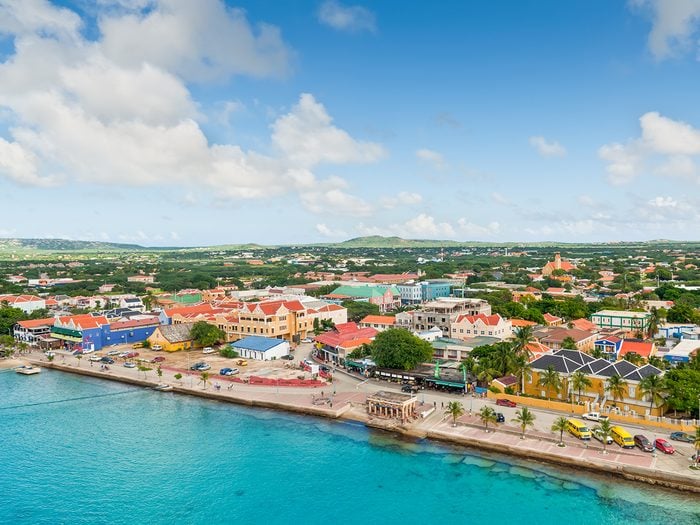
Why Bonaire Deserves to Be on Your Bucket List
Never heard of Bonaire before now? You’re not alone. Measuring just 294 square kilometres, this tiny island could very well be the Caribbean’s best-kept secret. Located 80 kilometres north of Venezuela (but far below the hurricane belt), Bonaire is part of the “Dutch ABC islands,” along with Aruba and Curaçao. The Netherlands municipality is home to about 19,000 residents—many of whom speak Dutch, Spanish, Portuguese and English. Oh, and it happens to be surrounded by what many consider the most spectacular scuba diving waters in the world. But would you believe us if we told you that Bonaire is worth travelling to even if you aren’t an expert diver?
Combining 365 days of sublime weather, fascinating local culture and jaw-dropping scenery, Bonaire has it all. If you’ve only got a week on this Caribbean paradise, give these essential Bonaire experiences top priority.
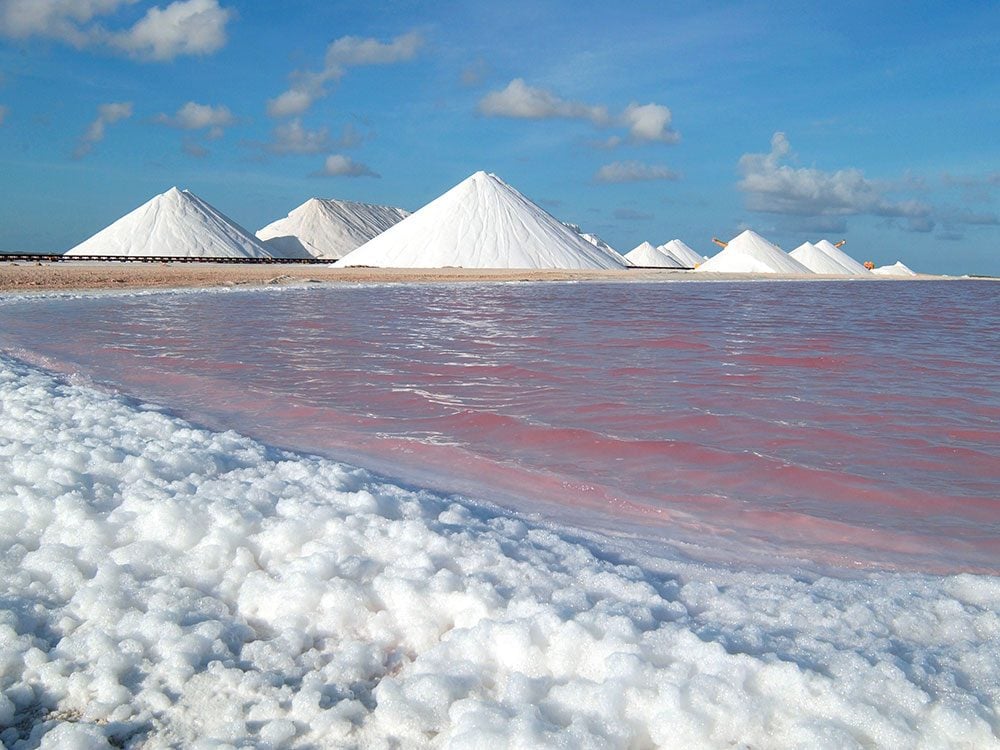
Visit Bonaire’s Salt Pyramids
For centuries, Bonaire has been the centre of the Caribbean’s salt industry. The creation of the island’s most-prized export begins when saltwater from the Caribbean is drawn into a series of evaporation ponds. Over the course of 12 months, the salinity of the brine increases as the sun and wind evaporate the water. The result? Stunning pink-coloured flats that cover about one-tenth of the island’s total surface area. Once washed, the pure salt crystals are stacked into 50-foot tall pyramids, which will then be processed and shipped around the world. Bonaire’s Cargill facility can produce 400,000 tonnes of salt a year!
Explore more of the world’s strangest landmarks.
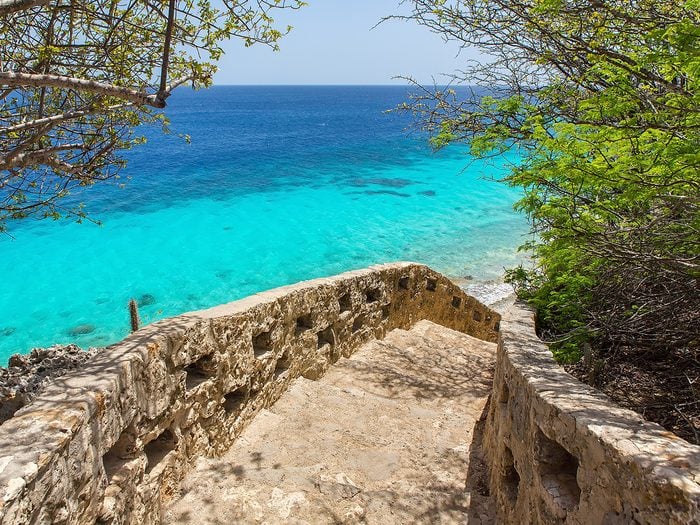
Behold 1,000 Steps Beach
Although life in Bonaire is already enjoyed at an unhurried pace, nothing beats the serenity and seclusion of Bonaire’s 1,000 Steps Beach. A pristine stretch of white sand and sun-bleached chunks of coral, the attraction takes its name from the limestone stairs used to access the beach from the limestone cliffs above. While the staircase actually consists of only 67 steps, the inside joke around Bonaire is that after a long day of relaxation, it might feel closer to a thousand steps walking back up.
Here are 10 places to see before they disappear.
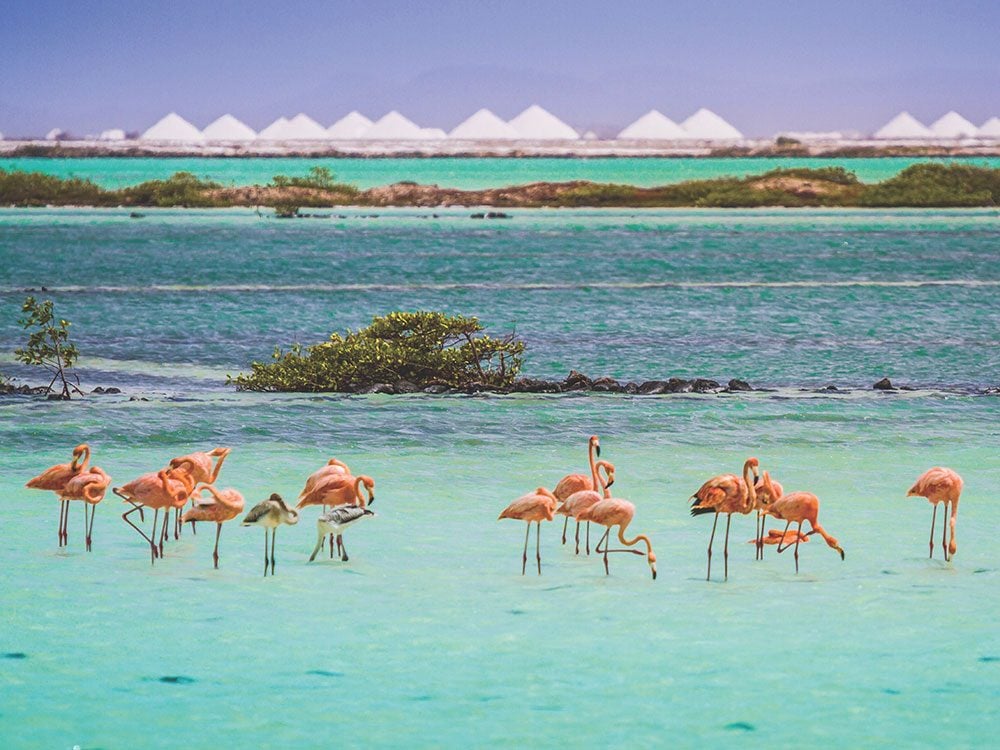
Spot Bonaire’s Pink Flamingos
Bonairians love pink flamingos—even the island’s airport is named after them. The birds get their vivid colour from the beta-carotene found in the brine shrimp and green algae they feast on; the older the flamingo, the more pink their feathers. The two best places to spot pink flamingos in Bonaire are Goto Lake in the north of the island and Pink Beach near the salt flats. Flamingo nesting areas are rigidly protected by the local government and off-limits to the public, so do stay in your vehicle. With a little bit of luck, however—not to mention a good pair of binoculars—you’ll be able to see many!
Don’t miss this gorgeous gallery of bird photography.
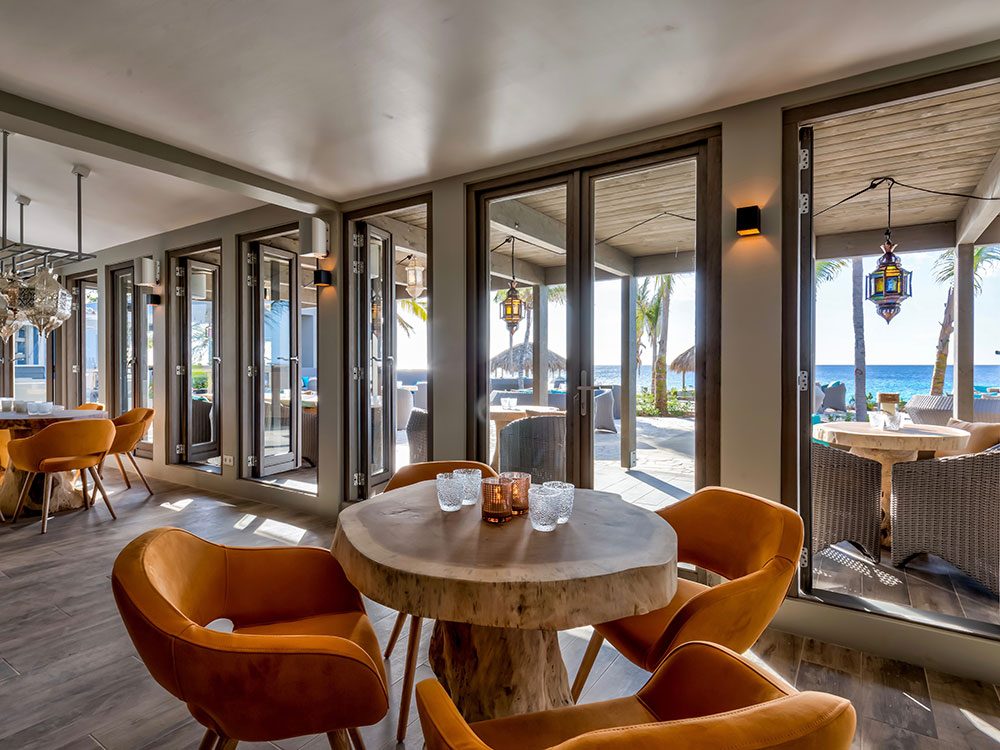
Savour Michelin-Worthy Cuisine
One of the newest additions to Bonaire’s burgeoning food scene is Brass Boer, opened by chef Jonnie Boer and his wife, Thérèse, at the Delfins Beach Resort. The couple is famous in the Netherlands for their restaurant, De Librije, which has three Michelin stars and is widely regarded as one of the best in the world. Among the standouts on Brass Boer’s fusion-inspired menu is the neck of lamb (served with ox heart cabbage, cucumber and curry yoghurt).
Also worth visiting is Ingridiënts Restaurant at the Buddy Dive Resort, which serves primarily Mediterranean dishes with a focus on locally sourced produce (think truffle pasta prepared tableside in a flaming Parmesan wheel). Did we mention both restaurants are situated right by the sea?
Check out the world’s dreamiest wedding destinations.
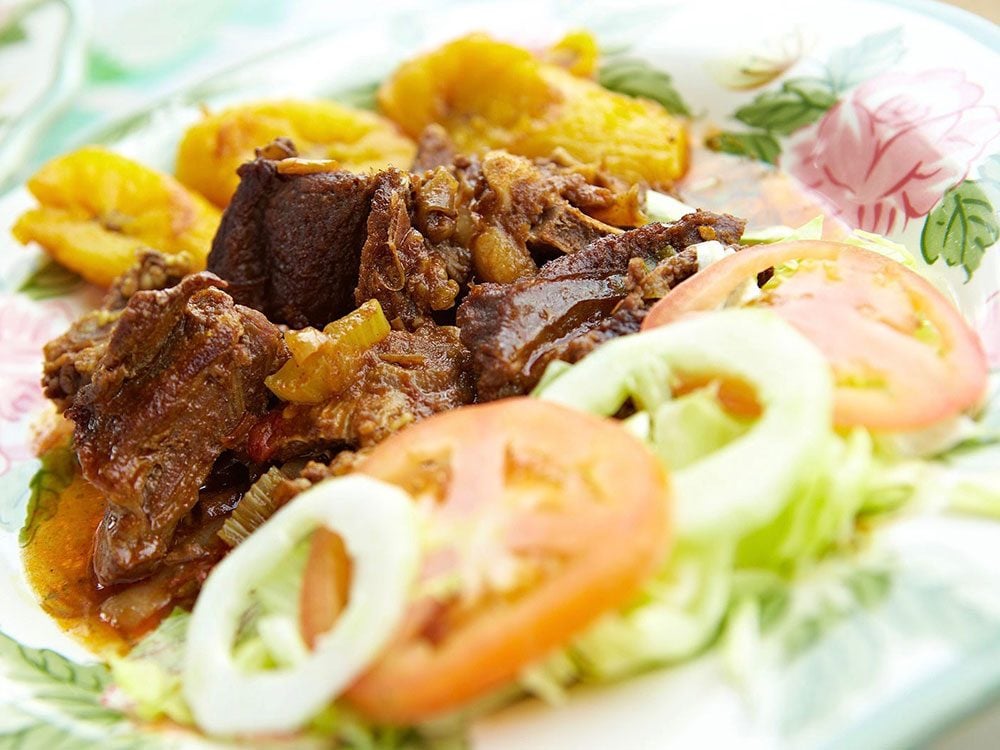
Experience Local Delicacies
Are you in the mood for some iguana soup? Make sure to add Posada Para Mira to your itinerary. Located on the outskirts of Rincon, Bonaire’s oldest town, the family-run restaurant boasts impressive views of the island’s southern landscape and is a must-visit for travellers in search of traditional Bonairian flavour. While goat, plantain and papaya are all local favourites, the island’s most famous delicacy is the green lizard. Don’t worry: the scales and skin are removed, and surprisingly, it tastes a lot like chicken (locals even claim it’s a powerful aphrodisiac). Foodies that prefer more common tastes can opt for the equally-delicious cod fish sandwich.
Here are 10 more places worth visiting for the food alone.
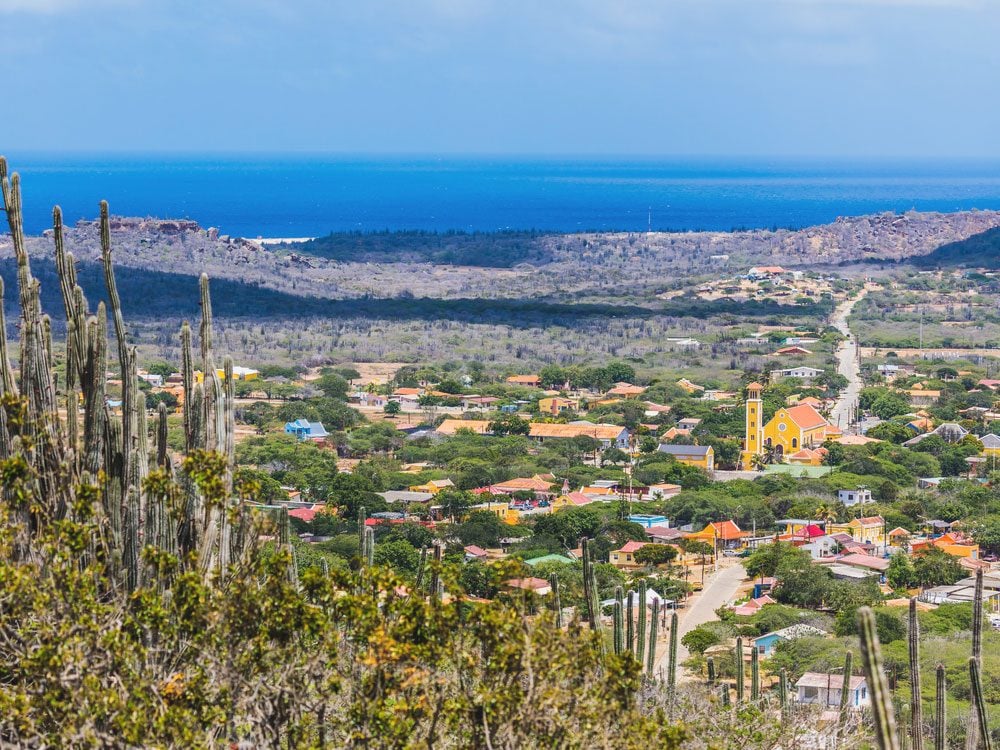
Wander the Streets of Rincon
Originally settled in the 16th century by the Spanish, Rincon isn’t just Bonaire’s oldest town—it’s also the oldest settlement in all of the Dutch ABC islands. The first thing you’ll notice about Rincon is its location: the town was strategically built in a valley to ward off attacks from would-be invaders. Many of the first slaves that were brought to Bonaire by the Dutch lived in Rincon, and were either tasked with tending to the settlement’s crops or the island’s salt flats in the south. Stop by the Museo Chich’i Tan, a house that’s more than 130 years old, and features the history of Bonaire’s earliest tools, musical instruments, artists and local food.
Explore the world’s greatest museums.
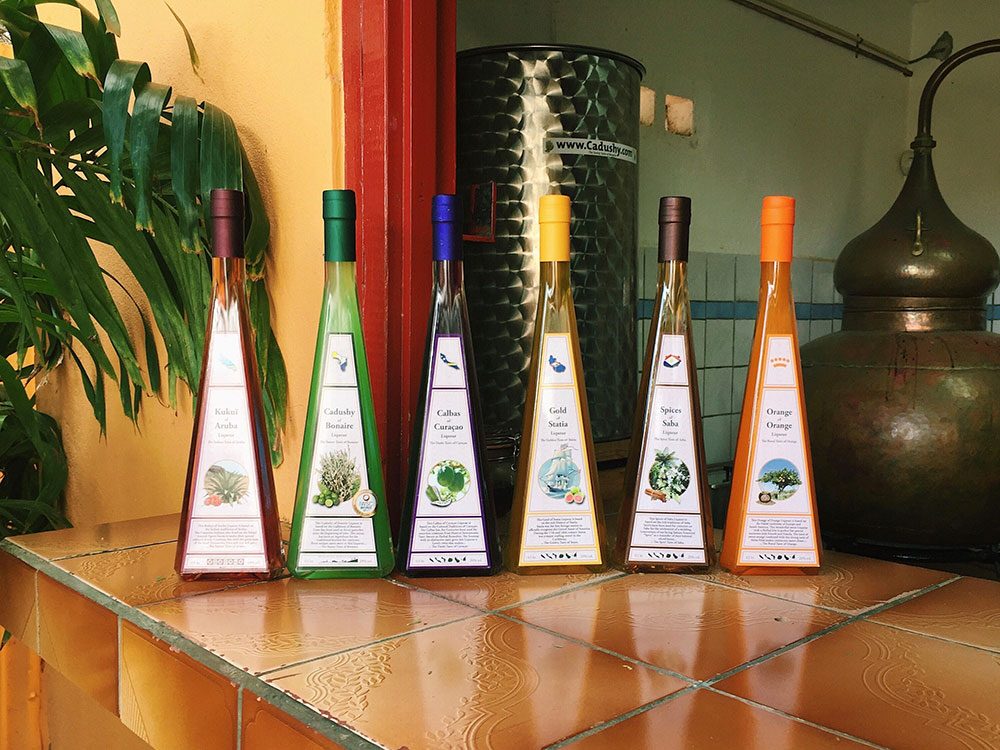
Sample the World’s Only Cactus Liqueur
Capable of growing to a height of 10 metres over its 100-year lifespan, the cadushi cactus is one of Bonaire’s most iconic—and plentiful—natural resources. Locals commonly use it in soups, but in recent years, the plant has found new life as an alcoholic beverage. Enter the Cadushy Distillery. Founded in 2009 by Eric and Jolande Gietman, the company is known for its cactus liqueur—the only one of its kind in the world. Made from cadushi, lime and sorghum, the result is a bright green delight that works well in a sweet cocktail.
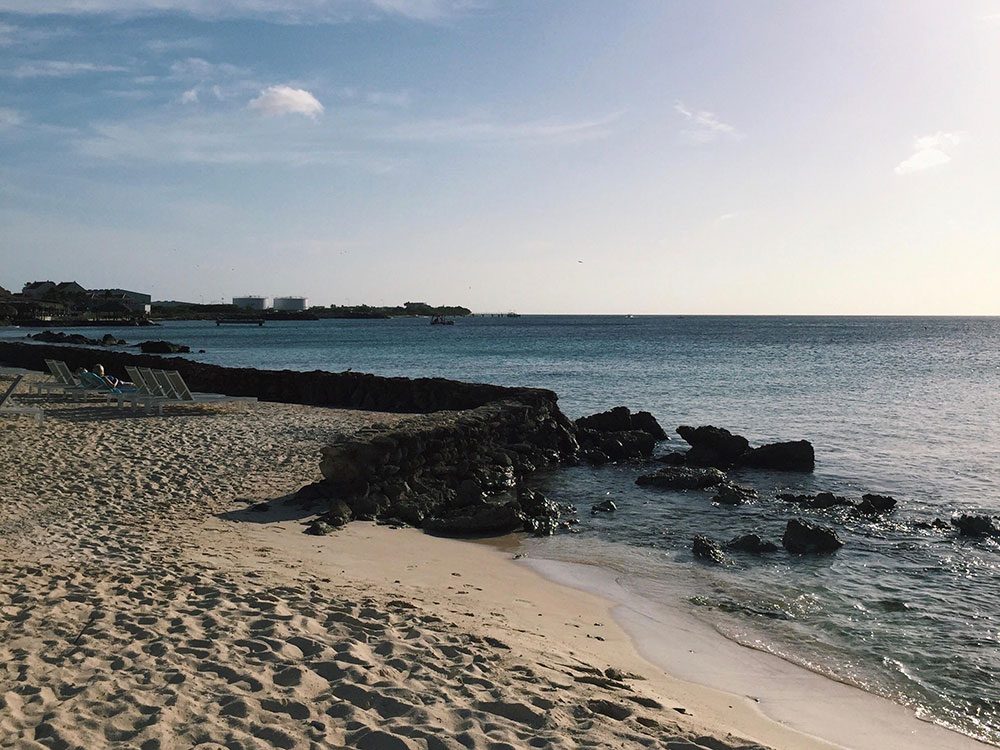
Unwind at Plaza Beach Resort Bonaire
For luxury that doesn’t hurt your wallet, book an all-inclusive suite at the Plaza Beach Resort Bonaire—just a 15-minute walk from downtown Kralendijk, Bonaire’s capital city. Amenities include a freshwater pool, gym, spa services and the Tipsy Seagull, which offers meals with impressive views of the sea. Whether you’re lounging on the property’s enormous beach (snorkelling gear and kayaks are available from the activity centre) or enjoying drinks by the lagoon, this sprawling resort is the ideal home base for your island adventure. For a truly opulent stay, request a beach-view grand suite. (You’re welcome.)
Avoid these common mistakes when booking your vacation online.
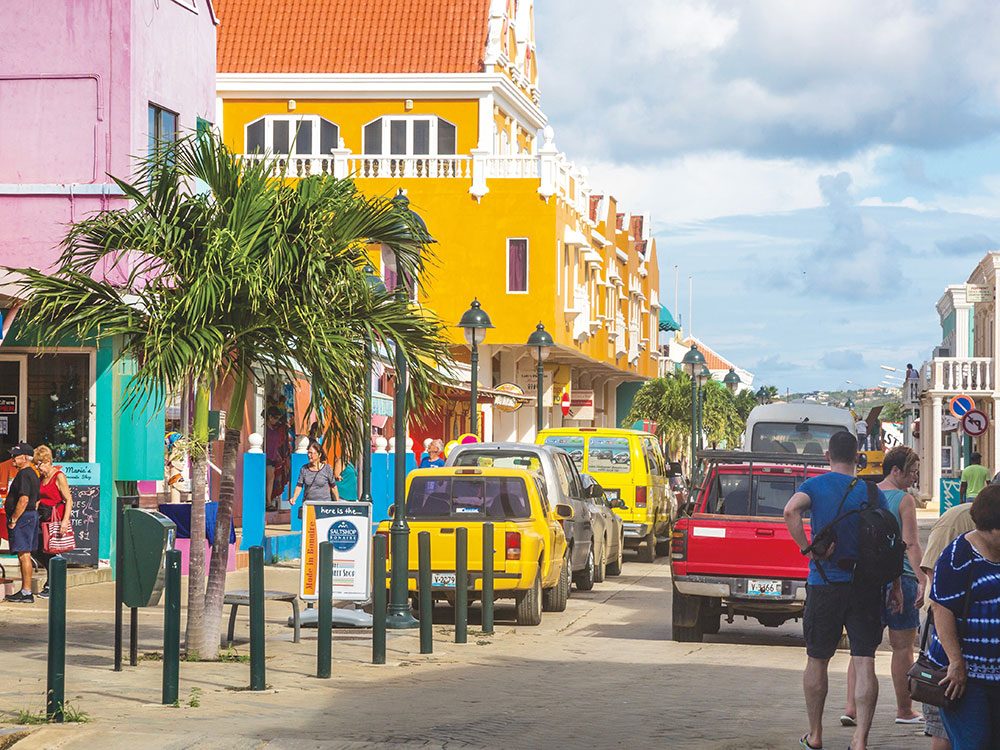
Stroll Along Kaya Grandi
Bonaire might not be the first place you think of for stunning architecture, but Kaya Grandi certainly delivers. The main shopping district of Kralendijk, Kaya Grandi boasts colourful colonial-style buildings that date back to the late 1800s. While browsing the strip, be sure to stop by Jan Art Gallery for artist Janice Huckaby Baillie’s impressive island-inspired oil and watercolour paintings.
Marvel at more unique architecture from around the world.
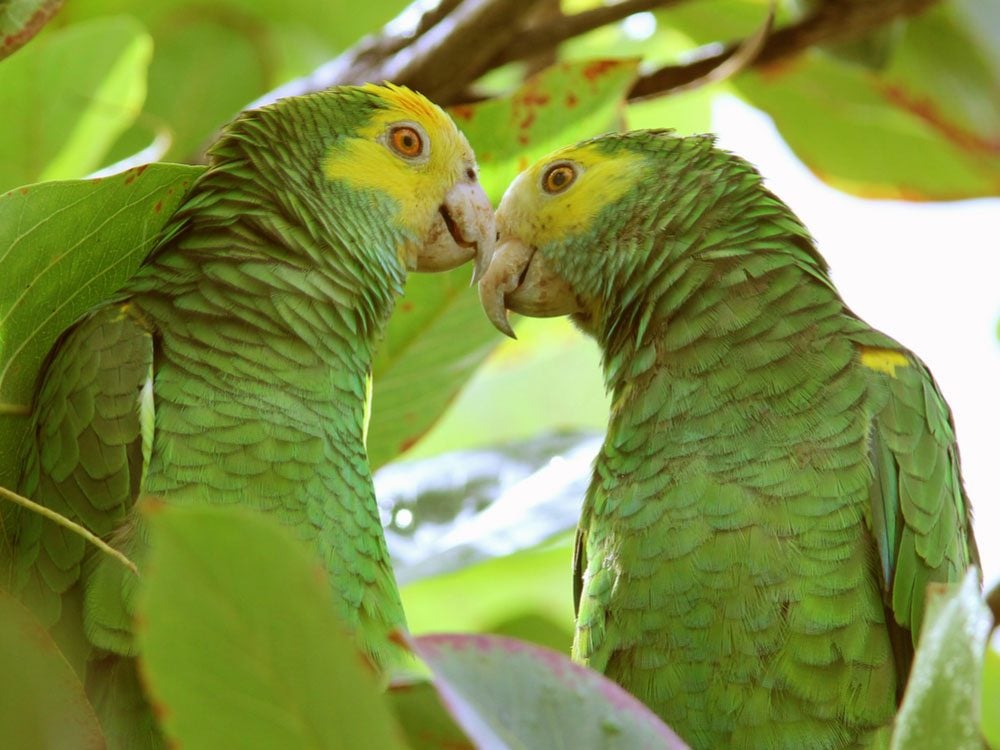
Take a Guided Tour of Bonaire’s Dry Forest
Bonaire is home to a variety of reptiles, amphibians and birds, from small geckos to silver snakes to Yellow-shouldered Amazon parrots—the island’s endangered species. A 30-minute drive from Kralendijk is Echo Conservation Centre, a non-profit organization that aims to ensure a stable and growing population of Bonaire’s parrots. The dedicated team at Echo hosts guided tours through Bonaire’s dry forest, and it’s an essential experience for nature lovers. Since 2011, they’ve rehabilitated and released over 50 of these gorgeous birds—who don’t seem to mind letting visitors into their home—back into the wild.
Venturing to Bonaire on a Caribbean cruise? Don’t miss these indispensable cruise tips from an insider.
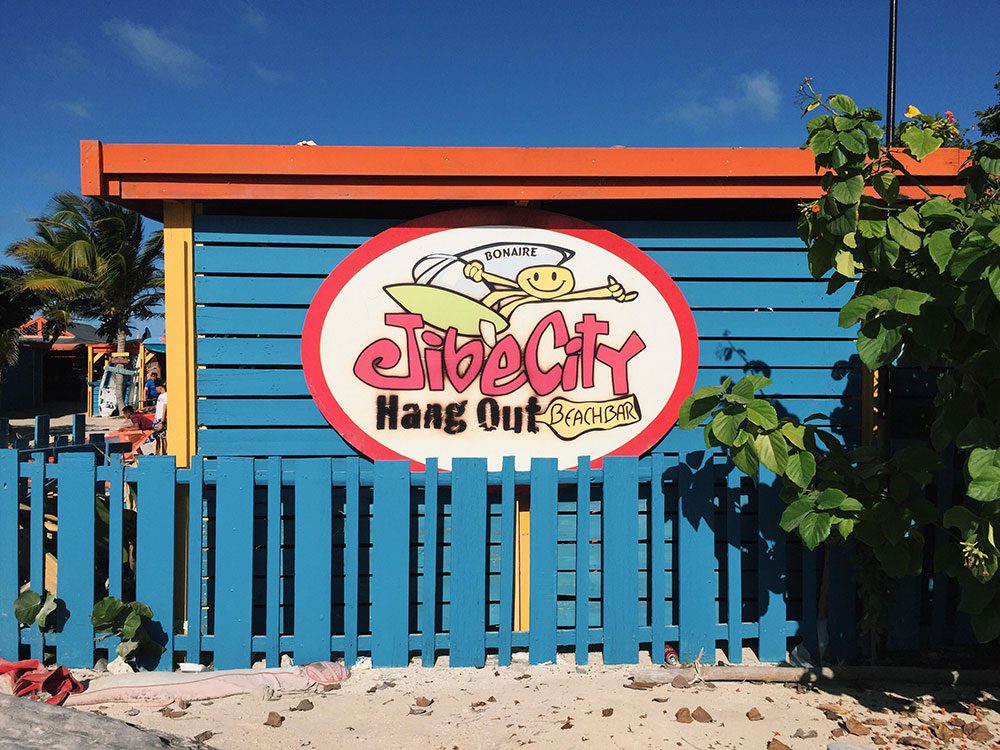
Lounge Beside Lac Bay
After an afternoon hiking through Bonaire’s dry forest, head over to Jibe City for mojitos and local beer. Equal parts windsurfing shop and hang-out spot, Jibe City wouldn’t feel out of place in Laguna Beach, and is perhaps the most “American” bar you’re likely to find in Bonaire. It features lovely views of Lac—the largest bay in the Dutch Caribbean and part of the Bonaire National Marine Park—and the island’s lush mangrove trees. Legend has it that this region of Bonaire was first inhabited over 1,500 years ago, when the Arawakan-speaking Caiquetio group from Venezuela arrived on the island.
These handy travel hacks could save your next vacation.
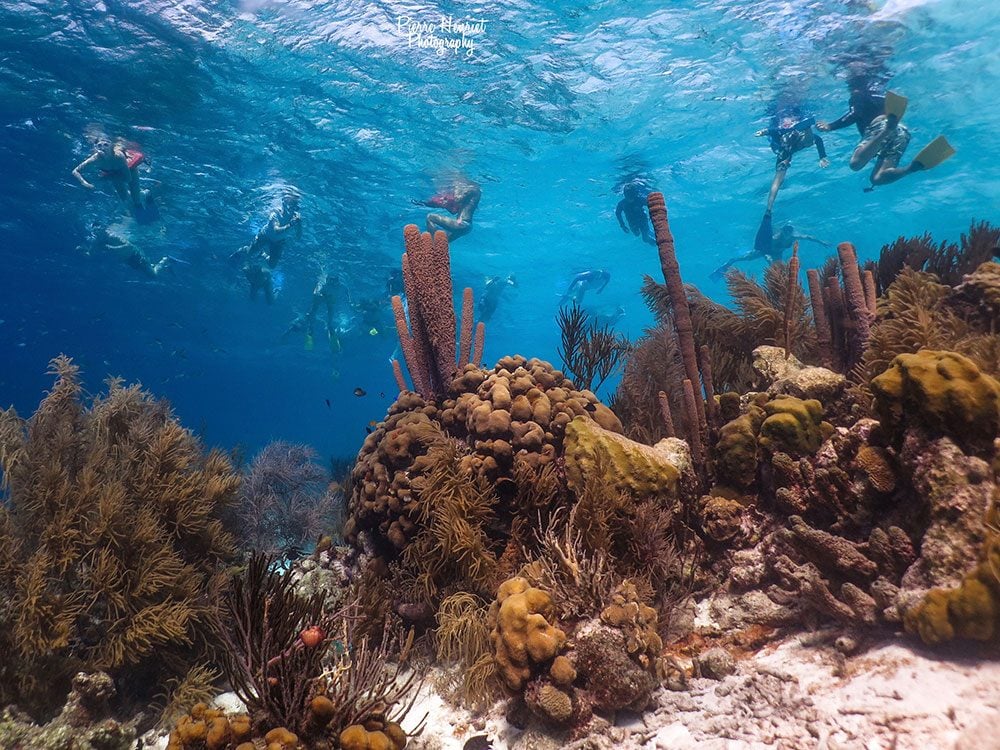
Go Snorkelling in Klein Bonaire
What’s the next best thing to scuba diving? Snorkelling, of course! A trip to Bonaire isn’t complete without a glimpse of the island’s magnificent shallow reefs. Book a three-and-a-half hour excursion with Henk and Gea of Sea Cow Charters to the waters of Klein Bonaire—a small uninhabited island off the west coast of Bonaire. Don’t have an underwater camera on hand? No problem! Sea Cow Charters employs a photographer to take shots of your underwater fun. Be on the lookout for stingrays, sea turtles and nurse sharks (don’t worry—they’re harmless to humans).
Next, discover the best Caribbean beach for every type of traveller.